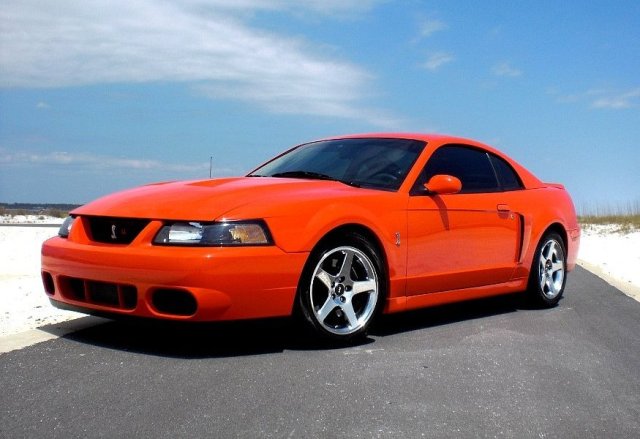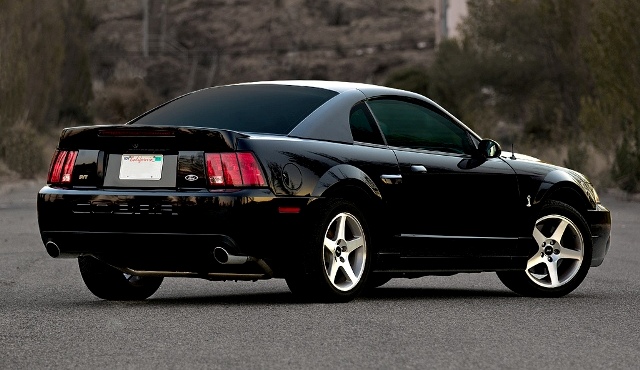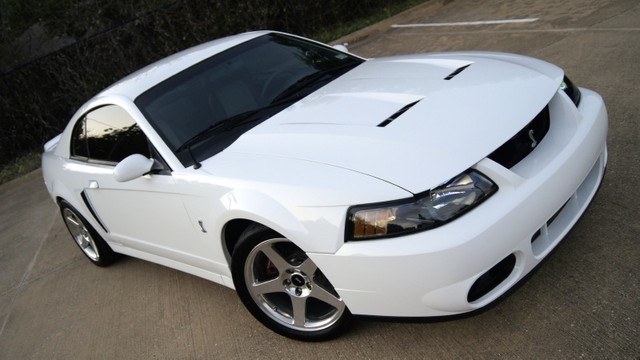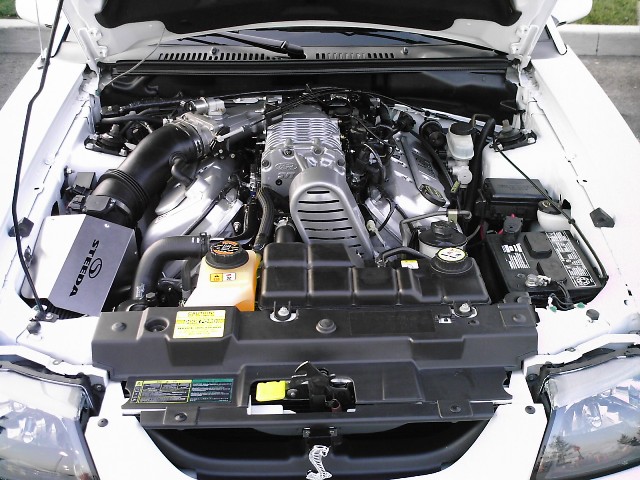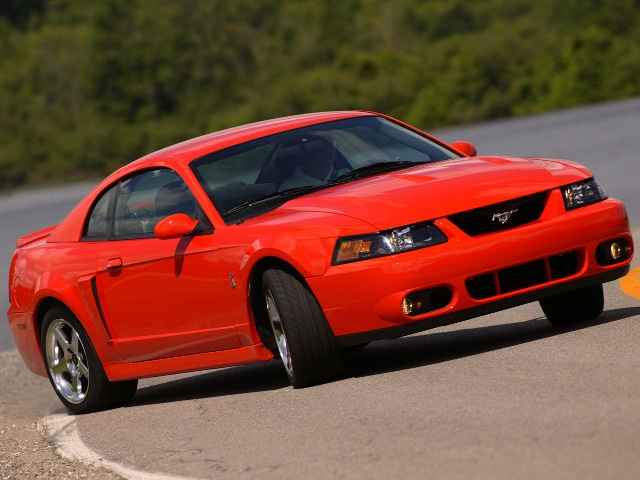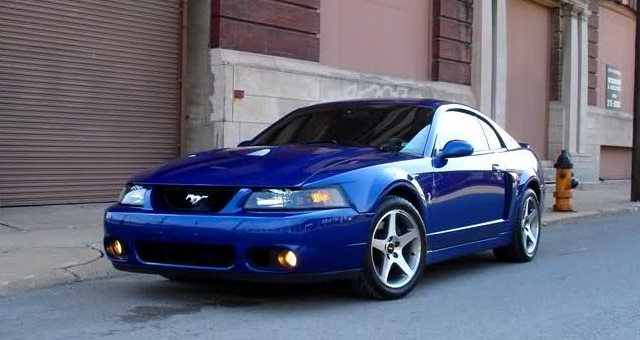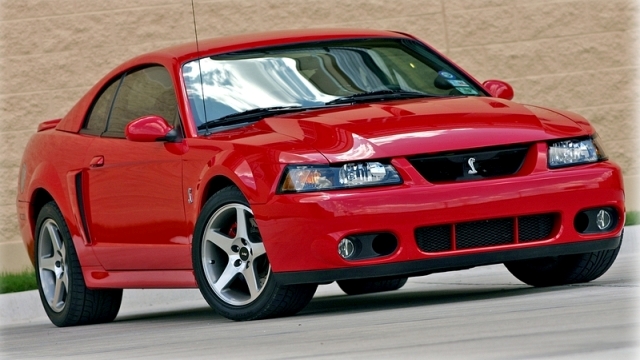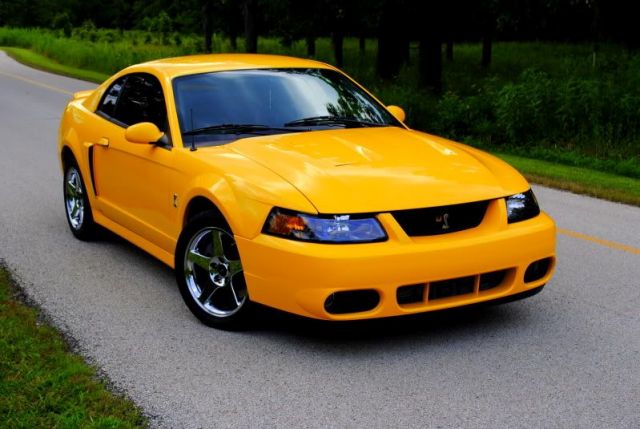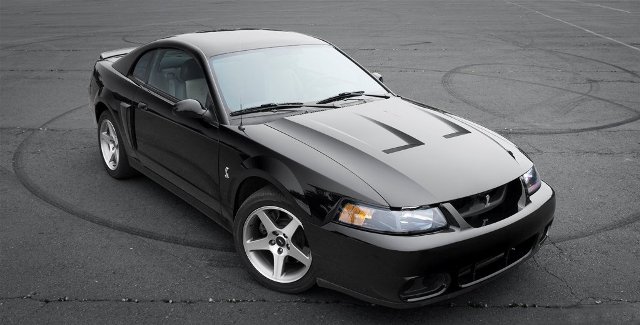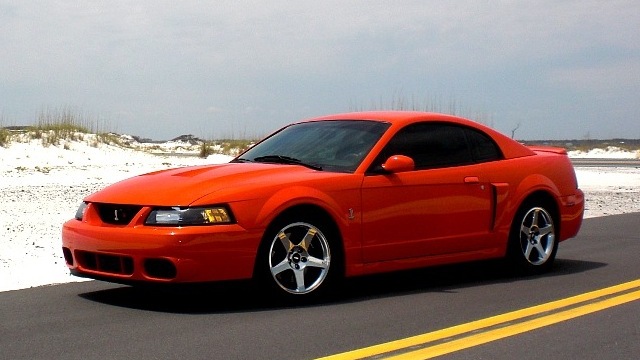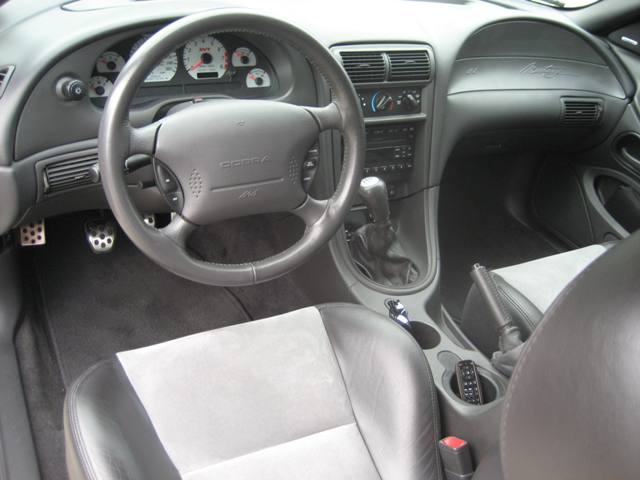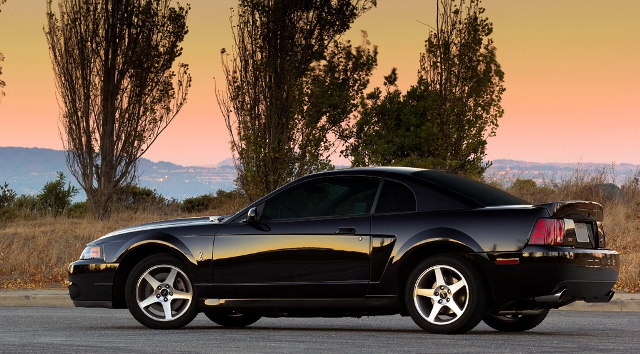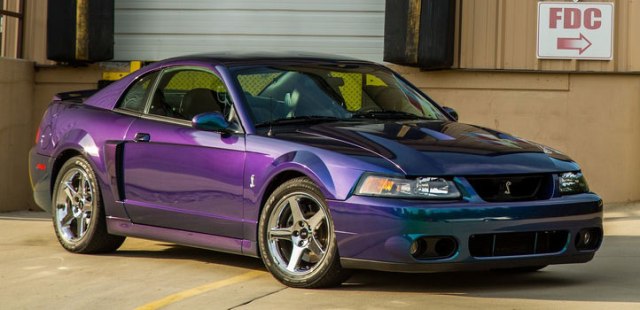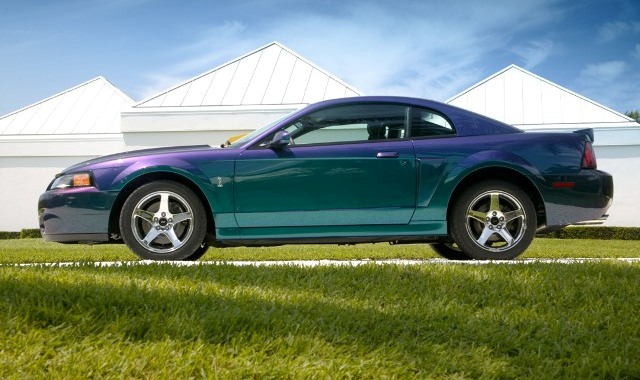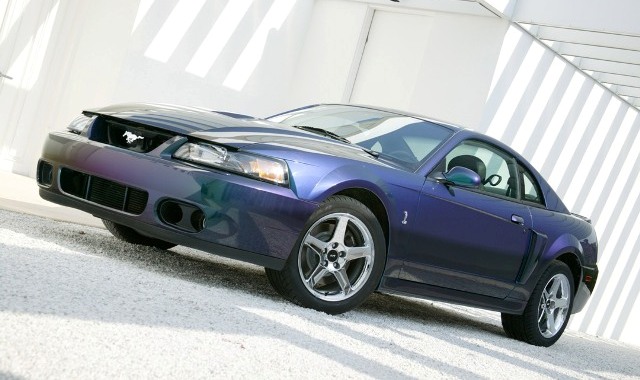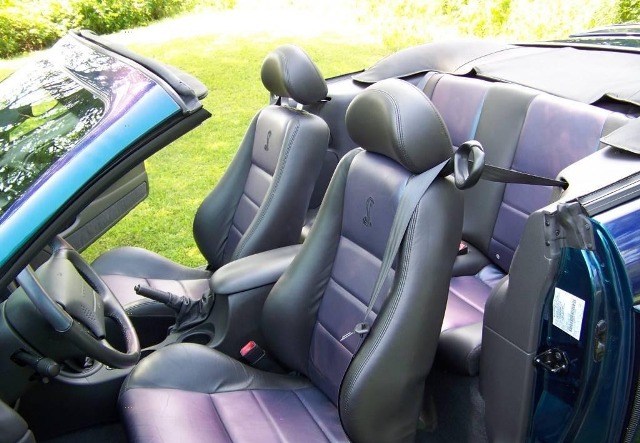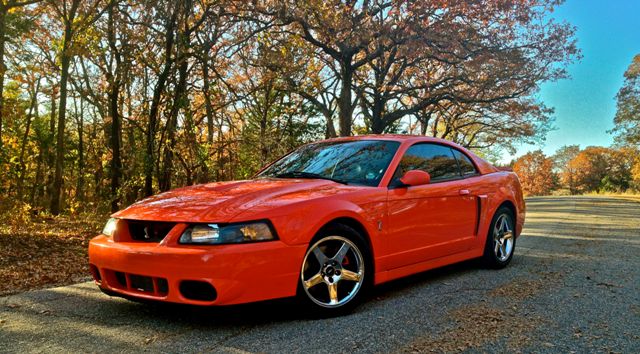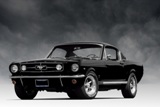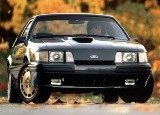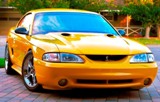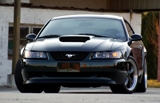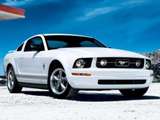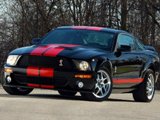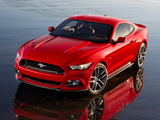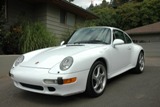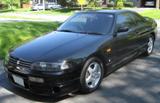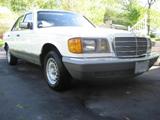Enthusiast's Corner
2003-2004 Ford Mustang SVT Cobra: The Terminator
Written by James Dolan
2003-2004 SVT "Terminator" Cobra
After 20 years of working in the automobile industry one thing I have learned is that the business is filled with people with big egos. Many times this personality quality can be a detriment but sometimes it can result in products of pure genius. The 2003/2004 Cobra was a product of John Coletti’s ego. Coletti was responsible for creating the SN95 Mustang and through its years of production, including the New Edge generation it was a sales success consistently beating the Camaro and Firebird on the sales charts.
While the SN95 Mustang’s may have been great seller it always got trounced by the General Motors pony car twins in the area of performance. Although the Camaro/Firebird may have had the performance edge it didn’t sell very well and by 2002 G.M. dropped its pony cars all together. To many people this would be viewed a triumph for Colletti, his car won in what is viewed in the auto industry as the most important race of all; the sales race.
But for Colletti this wasn’t good enough. You see Colletti is a car guy through and through and has a passion for high performance. With the Mustang constantly getting beat up on the streets by the Camaro and Firebird hurt his ego. Since the 2001 Cobra was now considered an equal to the G.M. twins as far as performance was concerned, Ford and SVT (that was headed by Colletti) could have just left the car alone knowing victory was ultimately theirs. Besides a new Mustang was scheduled to be introduced in 2005 and with no competition there would be little reason to revise the Cobra.
This however wasn’t good enough for Colletti who was tired of hearing the debate about which pony car was the best of the best, he wanted to terminate the conversation with a car that would without a doubt completely blow G.M.’s cars out of the water and end the decades old debate. This would be the best Mustang ever conceived but also the best performing pony car ever created to that point. And this is how the concept of the 2003 SVT Cobra “Terminator” came about.
In the interest of full disclosure I must tell you that for just over ten years I have owned a 2003 SVT Cobra and I am still enamored with this epic car so take my comments regarding these cars with grain of salt. However ask anyone who has owned one or better yet driven one and they will confirm that my glowing sentiments are not an exaggeration.
So what makes the 2003 SVT Cobra so awe-inspiring? Well it has 390-horsepower for starters and performance that not only matches, but in some areas exceeds the colossal 2000 Cobra R! How did SVT achieve this? With a lot of engineering, testing and a little creativity the people at SVT were able to squeeze ever ounce of performance capability out of both the DOHC V-8 and Fox-4 chassis.
Early on in the terminator’s development John Colletti had set lofty performance goals for what was supposed to be the 2002 Cobra. One day during extended durability road testing, Colletti and his group of engineers pulled off for a lunch break and Colletti wasn’t happy. He felt that the naturally aspirated Cobra that they were working on was a dog; it just didn’t meet his lofty expectations, and it had to be better.
While at lunch the group scrapped the plans for the car that they were testing and collectively put their heads together to come up with something better. Quickly they had determined that the naturally aspirated 4.6-litre V-8 had reached its practical development limits in the form that they were testing. Then the group zeroed in on another successful SVT product, the Lightning. The Lightning was a heavily modified F-150 pick-up truck that reliably produced 380-horsepower from a supercharged 5.4-litre V-8. Their thoughts were to combine the best of both the Cobra and Lightning and install the supercharger from the truck onto the 4.6-litre twin-cam Cobra engine. The newly invigorated group headed back to Detroit to begin work.
Supercharging the Cobra was not entirely a simple task and involved much more than simply bolting a supercharger to its high strung engine. Initially engineer’s patterned the supercharged Cobra engine off of the Lightning engine program since that vehicle had proven to be very reliable. Early on engineers felt that bolting up superchargers to the light-alloy 4.6-litre 32-valve V-8 could end with disastrous results so instead of taking a chance SVT engineers changed gears and decided to go with a more durable cast-iron block just as had been used on the Lightning. Once again, the engine block was a 90-degree V-8 with a bore 90.2mm and stroke of 90.0mm giving the Terminator a displacement of 4,601cc.
Fitted inside the block is the same fully counterweighted forged steel crankshaft found in the 2001 Cobra. Engineers had determined that this crankshaft was more than capable of handling the extra stresses of the supercharged the engine. Some additional machining of the cast-iron block was required in order to make room for the large counter weights of the crank. Each connecting rod was paired with a forged piston with dished tops that lowers the compression ratio to 8.5:1. The lower compression ratio was required because of the additional compression pressures that the supercharger places on the engine.
New aluminum alloy 4-valve heads were designed with greater flow capabilities and better low-end torque characteristics without sacrificing peak horsepower. Valve sizing remained the same as before but the camshafts were reprofiled to take advantage of the new head design. Roller finger followers with hydraulic lash adjustment were used along with oval-wire beehive-shaped valve springs to keep all 32-valves under control at high engine speeds.
The Roots-type supercharger manufactured by Eaton that sat atop the engine was the secret to 2003 Cobra’s colossal power. Originally an Eaton M-90 supercharger was specified however it was deemed to small to accommodate the 4.6’s voracious appetite for air, so engineers bolted on the Generation IV M-112 unit used on the Lightning. In order for the supercharger to clear the Cobra’s lower hood line the air inlet had to be moved from the top of the supercharger to the rear. The cast aluminum supercharger case houses a pair of machined aluminum rotors that are driven by their own dedicated drive belt.
Fully spooled up, the supercharger squeezes out a maximum boost pressure of 8.0 pounds per square inch. The compressed air is then fed through a water-to-air intercooler that removes the heat generated during compression to make a denser intake charge before entering the combustion chamber. The intercooler even has its own separate coolant loop; expansion tank and electric water pump to keep temperatures down.
To accommodate the supercharger and the engine’s need for better airflow the intake manifold was redesigned with tuned equal length runners and cast out of aluminum. These changes also necessitated the use of a larger 90mm mass-air flow sensor and new throttle body with twin 57mm bores. These were larger than the units used on the mighty Cobra R!
All that extra air going into the engine required more fuel to prevent the 2003 Cobra from running dangerously lean while at full boost. To solve this SVT engineers fed the supercharged 32-valve V-8’s sequential fuel injection system with dual fuel pumps wired in parallel and ran at the same time. The fuel tank was also modified and gained an internal sump; this prevented the 03’ Cobra from suffering any fuel starvation during hard cornering situations with a low amount of fuel in the tank.
Spent exhaust gases were led out back through dual 2.25-inch stainless steel tubes to a pair of 3-inch polished tips. The system was retuned to give the Terminator a deeper, throaty growl with an exhaust note that was just loud enough to be under the legal limit. Although under hard acceleration the exhaust note is completely drowned out by the frantic whine of the supercharger. While some may miss the bark of the V-8, I find the supercharger whine just adds to the charm of the Terminator Cobra.
On paper the 2003 Cobra was shaping up to be a spectacular car. However during durability testing, ten of the twenty engines tested failed spectacularly; launching pieces of the connecting rods out of the engine block in dramatic fashion. Initially, engineers used the powdered metal connecting rods from the 2001 Cobra since a similar rod had been used in the Lightning and had held up just fine. However, since the Cobra’s 4.6-litre engine was capable of much higher rpm and piston speeds than the Lighting the powdered metal rods would fail when exposed to the extra pressures from supercharging at high engine speeds.
This failure nearly ended the Terminator program all together since Ford simply didn’t have a stronger connecting rod readily available. Although Ford engineering had a stronger connecting rod under development it was clear that these rods would not be ready in time. Engineers needed something quickly and it had to be strong and already in existence. So SVT turned to the aftermarket and found Manley Performance Products Inc., a company well known for making high performance products for the motorsports world; in particular for race teams competing in the National Hot Rod Association drag racing series. When contacted, Manley agreed to participate in the Terminator program and sent over a set of their heavy-duty H-beam connecting rods for engineers to play with.
When put through durability testing the heavy-duty Manley H-beam connecting rods held together along with the rest of the engine components. As testing progressed the supercharged, iron block 4.6-litre V-8 literally flew through the rest of its durability testing with flying colors; thanks to those expensive Manley rods in place. So with durability testing deemed successful a set of heavy-duty H-beam connecting rods from Manley Manufacturing were specified and clamped onto the crankshaft with heavy-duty ARP bolts and the Terminator program was allowed to go forward.
As per mod-motor Cobra tradition the supercharged Cobra Terminator engine was assembled at the Romeo engine plant on the niche-line. Each engine was carefully hand assembled by two people whose signatures adorned a plack affixed to the valve coved on the left side of the engine. Once assembled the supercharged Terminator V-8 produced an advertised 390-horsepower and a colossal 390 foot-pounds of torque; a full 20 percent more than the pervious naturally aspirated Cobra! But the advertised power and torque aren’t as impressive as how the 2003 Cobra produces its power. Unlike past modular powered Cobra’s that were high strung power-plants which produced most of their usable power in the upper reaches of the tachometer, the supercharged Cobra produces most of its torque just off idle and peaks at a very low 3,500-rpm. This makes the Cobra accelerate with ferocity never before experienced in a production Mustang, this includes the legendary big blocks from the 1960’s.
Power is transferred to the rear wheels via a lightweight aluminum flywheel weighing in at just 11.2-pounds and is similar to the one used on the 2000 Cobra R. This flywheel reduces inertia that allows engine to have free-revving capabilities. To handle the increased torque the pressure plate had to be redesigned to have increased clamping capabilities onto the 11-inch single plate clutch disc.
SVT engineers once again called upon the six-speed Tremec T-56 that had been installed in the 2000 Cobra R to perform transmission duties in the 2003 Cobra making the Terminator the first mass market Mustang to offer a six-speed gearbox. With the high torque output the T-56 manual was the only practical choice engineers had without engineering a whole new gearbox, besides the T-56 really wasn’t a bad choice at all. A new aluminum driveshaft with upgraded heavy-duty hardened yoke and universal joints transferred power out to the rear end. Inside the aluminum differential housing was a 3.55:1 gearset with limited slip. Linking the differential to the rear wheels was a pair of higher capacity 31-spline half-shafts that could handle the Terminator’s pavement shredding torque.
Improvements to the 2003 Cobra’s suspension system were almost as extensive as the changes under the hood. Because of the significant increase in horsepower and torque the Cobra required extensive retuning of its independent rear suspension. A new tubular cross brace attached to the differential was added to keep the housing from twisting under the high torque loads under hard acceleration. Harder bushings were specified for less give for sharper response. Rear suspension geometry was revised to help improve roll steer.
For the first time, Cobra coupe and convertible models didn’t share suspension tuning. Convertibles were produced with spring rates of 500 pounds per inch in front and 470 pounds per inch at the rear, stiff for a production Cobra. However it was the coupe that came with the ultimate suspension set-up with 600 pound per inch springs all the way around. These new springs also lowered the 2003 Cobra by a quarter inch compared to the 2001 car. This gave the ’03 Cobra an aggressive stance with the body sitting low on its suspension. Keeping the springs under control was a set of gas-charged, mono-tube Bilstein dampers at all four corners along with a 26mm tubular stabilizer bar at the rear and a 29mm tubular stabilizer bar at the front that had grown by one millimeter. With these changes it was clear that SVT was taking the Cobra down the road of ultimate performance rather than having a vehicle that compromised performance for some level of comfort.
Steering on the Cobra was also revised for 2003 with a retuned rack and pinion steering system. A new, low lash intermediate shaft was installed along with a higher rate steering gear bushing. These changes resulted in quicker steering response and better feel by reducing play in the system.
To take advantage of the new suspension tuning and to help get the power to the road a new five-spoke cast aluminum wheel measuring 17x9 was designed. These massive wheels were one inch larger than the wheels used on the 2001 Cobra. The wheels were then fitted with a massive set of 275/40ZR17 Goodyear Eagle F1 tires, the widest tires ever fitted to a Mustang.
Behind those gorgeous wheels was a set of 13-inch Brembo front vented rotors with PBR dual-piston calipers, and 11.65-inch rear vented rotors with single-piston calipers. Braking was controlled by a four-channel, four sensor anti-lock braking system that at the rear also doubled as a traction control system that would allow for tire smoking starts as long as the vehicle was going in a straight line. For the ultimate fun the traction control system could be defeated by pressing a button located on the dash below the radio.
The Cobra’s exterior was treated to a multitude of changes that were restrained yet gave the car a sinister look of understated aggression. It had a lower, wider stance thanks to the new springs that lowered the car by.25-inches and very wide low-profile tires. A new more aggressive grille-less front fascia was designed with a larger opening for the lower air intake and oval openings that housed the fog lights and additional round openings that could be used for brake cooling ducts.
The domed hood was made of lightweight composite material and included a pair of reverse facing functional flow-through heat extractors to help evacuate the extreme heat generated by the supercharged V-8. Overshadowed by the new hood was a pair of aerodynamic wiper blades with an integrated wing that greatly reduced lift off of the windshield at speeds up to 130 miles an hour.
A simpler, cleaner look was given to the sides of the Cobra with rocker panels that were shaped with clean vertical surfaces and a set of body coloured foldable side view mirrors. More subtle changes included new side scoops that had horizontal fins to match the fins on the hood scoops.
At the rear the decklid was made of the same lightweight composite material as the hood and mounted on top was a standard spoiler with a wedgy, low-profile appearance that incorporated an LED stop lamp. This spoiler not only looked cool, if a bit chunky, it was functional as well reducing dreaded lift at high speeds. The rear bumper was also reshaped and smoothed with 30-inches of embossed “COBRA” lettering being prominently displayed. Below the embossed lettering on the lower portion of the bumper was a rear diffuser finished in black. Lastly the Cobra switched back to using standard Mustang rear tail lights rather than the units with integral amber turn signals that had been used since 1999 on the Cobra and Cobra R.
Convertible Cobra’s received a new top made of high-quality cloth material that was more durable and helped better insulated the driver and passengers from outside noise pollution. The top was available in either Black or Parchment fabric.
Inside, the 2003 Cobra received some attention as well. All Cobras’ came finished with a Dark Charcoal interior. The seats were all new heavily bolstered buckets that held the driver and front seat passenger securely in place when the road got twisty and the driver felt frisky. The driver’s seat also had the added bonus of six-way power adjustment for position, plus power-adjustable side bolsters, thigh bolsters and lumbar support. These seats offered comfort and adjustability never offered before in a Mustang. Seating surfaces were upholstered in luxurious Nudo leather with suede centre accents that were available in Medium Graphite or Medium Parchment.
Ahead of the driver was a full set of titanium-faced electroluminescent instruments that illuminated in a soft, soothing green glow at night. A 10-psi boost gauge replaced the amp-meter giving the driver a clue of what was lurking beneath the hood. The foot pedals were dressed in metal trim and a new leather wrapped shift knob had a brushed-aluminum insert on the top with the shift pattern of the six-speed manual inscribed on top.
The 2003 Cobra was essentially fully equipped coming with such items as power windows, locks, mirrors, decklid release, cruise control, tilt wheel, and air conditioning all standard. The audio system was Ford’s awesome MACH 460 Sound System with eight speakers and two external amplifiers and a six-disc in-dash CD changer. Unlike the 2000 Cobra R the Terminator Cobra wasn’t lacking any features and the Terminator was capable of similar performance. Best of all it was priced about $20,000 less than the Cobra R!
Options for the 2003 Cobra were extremely limited. Besides body style and colour choices, buyers were offered a rear spoiler delete option and a set of chrome wheels that appeared in the brochure but due to production delays those didn’t materialize until 2004, and that was it. Thankfully there was a generous palette of colour choices that included Oxford White, Ebony Black, Torch Red, Sonic Blue, Satin Silver, Mineral Grey and Zinc Yellow. In mid 2003 Mineral Grey was replaced with Dark Shadow Grey and Satin Silver was replaced with Silver Metallic and Redfire was added to the list.
Not surprisingly changes for 2004 were very minimal. The chrome wheels promised in 2003 were finally available. The convertible top was now only available in one colour, black. Inside, the suede inserts in the seats were now available in Medium Graphite and Dark Charcoal replaced Medium Parchment. Colors for 2004 were revised with a retina burning Screaming Yellow replacing Zinc Yellow and Competition Orange was now available. Dark Shadow Grey was dropped altogether.
In total 19,140 Terminators were produced (13,476 in 2003 and 5,664 in 2004) making this special Cobra the most popular Cobra SVT had ever produced. Not surprising since the Terminator Cobra is considered do be the best of the breed.
Driving a Terminator Cobra
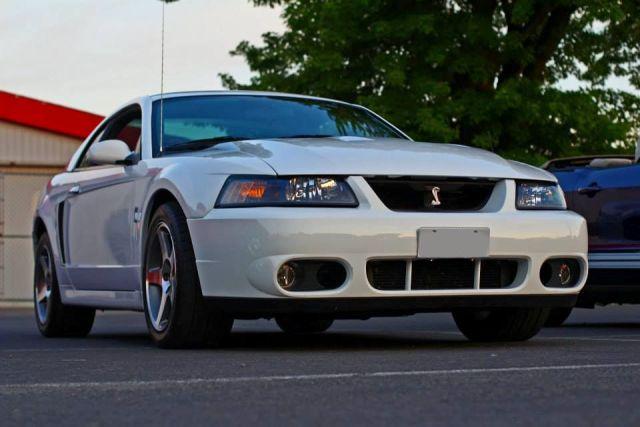
The author's 2003 SVT Cobra Coupe
So what is it like to drive a 2003-2004 Cobra? Well it is an exhilarating unforgettable thrill ride and I can tell you this from first hand experience because I have owed on of these remarkable beasts since 2004 and I can honestly tell you that after 10 yeas of ownership the thrill has never diminished. My particular car is a 2003 finished in Oxford White with the spoiler delete option selected making this Cobra a particularly rare example since this option was rarely taken. The car is essentially as it came from the factory with the exception of an aftermarket air-filter that eliminates the restrictive factory air-box, a set of stainless-steel “COBRA” bumper inserts window tint and a set of red calipers from the 10th Anniversary Edition Cobra. After ten years the car has approximately 74,000 kilometers on the clock.
Driving a Terminator Cobra is an experience like no other. The power is incredible and intoxicating, if not careful you can end up sideways very quickly if you’re to enthusiastic with the throttle. Driving on wet pavement can be a frightening experience and is like driving on ice. Power comes on instantly and seems to be endless. When pushed hard the rumble of the hand assembled twin-cam V-8 is drowned out buy the whine of the Eaton Supercharger; instantly the scenery around you becomes a blur. Acceleration is downright frightening to the uninitiated. Quickly you realize that there are not too many cars on the road that can out accelerate this one.
Power in the Cobra feels as if there is more under the hood than the 390-horspower rating would suggest and I suspect that the engine is in fact underrated. As a matter of fact the Terminator Cobra is just a tenth of a second behind the Mighty 2000 Cobra R on a run to 60mph and will actually beat the R in a quarter mile drag race! Unlike the Cobra R the Terminator Cobra is electronically limited to 155mph; however unbridled this snake can hit speeds of over 175mph in stock form. This is truly astonishing considering that the Terminator Cobra is equipped with all the added weight of the luxuries that the track dedicated Cobra R does without.
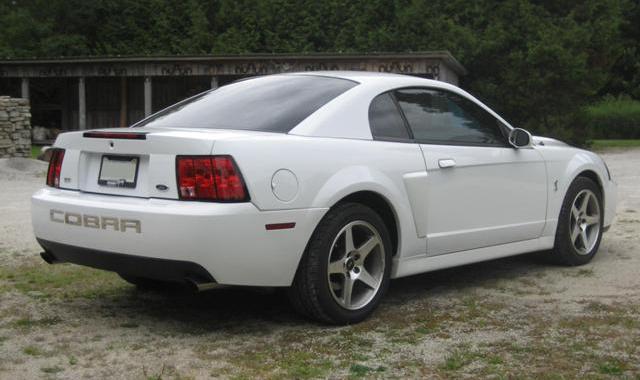
The author's 2003 SVT Cobra Coupe
Acceleration and speed are just one aspect of this car. Unlike Mustangs from the past this one actually handles. This car just plants its self to the pavement and sticks, and sticks some more. Driven hard enough the Cobra will peel your face off from corner to the next. The heavily modified front suspension along with the well sorted out rear suspension with Bilstein socks and struts makes a monumental difference. Combine that with sticky tires and 13-inch Brembo brake rotors with PBR twin piston calipers and you have a car that stops and turns just as well as it accelerates.
Drive a live axle Mustang GT from the same generation and you would swear you were driving a completely different car. Even though the car weighs over porky 3,600 pounds it feels lighter and handles more crisply than the weight would suggest thanks to the spectacular job the SVT engineers did with suspension tuning. You would be hard pressed to know that a heavy iron-black V-8 is sitting over the front axle. This is one of those cars that are well dialed in with all its components working together in complete harmony resulting in a driving experience that is stunning. What more could anyone want?
The epic performance for a beer budget price does come with a price. This truly isn’t a car for everyone. Hand assembled engines, fancy heavy duty transmissions, brakes that can make you lose your lunch when fully applied and tick suspensions are expensive. The Mustang which the Cobra is based on was already an old platform when the car was rolled out. That’s being too kind; it’s Stone Age in the automotive world. To add insult to injury the platform was designed for a late 70’s Ford sedan not specifically for a 390-horsepower sports coupe. In Mustang form the Fox platform dates all the way back to 1979. These were the days before air bags, ABS brakes, five start crash ratings, and well you get the idea. Sophistication is not a strong suit of this ride.
To Ford’s credit they did an amazing job modernizing things over the years. This is a car that can be driven day in and day out to the office or grocery store as I did every summer for the first couple of years of ownership. And it was reasonably comfortable in doing so. On the flip side the car could out perform vehicles that cost many thousands more with a prod of the throttle and flick of the steering wheel. The 2003-2004 Cobra is also a great grand touring coupe that will take you to a weekend getaway up in the mountains both quickly and comfortably.
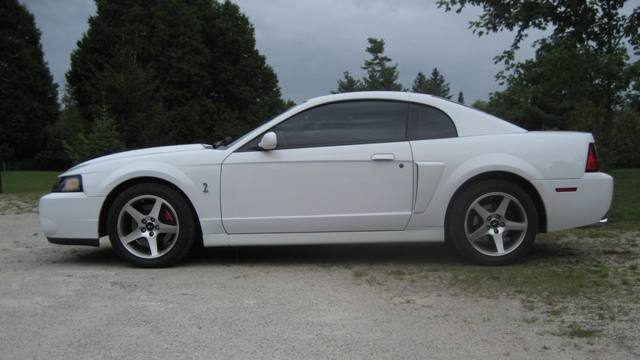
The author's 2003 SVT Cobra Coupe
However the archaic engineering shows. The seating position along with the relationship of the driver to the steering wheel, shifter, controls and pedals is all completely wrong. The cabin is cramped. The cable actuated clutch can be painfully heavy especially if you are stuck in Toronto’s world famous traffic. The bulky shifter can be a pain if you are not precise and lack finesse, its way too easy to miss a second to third shift on hard acceleration. Aside from the gorgeous Nudo leather and suede seats, fit and finish inside and out is abysmal compared to everything else made in 2003.
You may think that with all these flaws that this car is good only for a scarp pile. Well you could not be more mistaken. This car is filled with personality and charm. The flaws are part of the appeal, once you get the hang of things you become more and more comfortable and you start to appreciate all the great things that have gone into this machine. The way everything works together on the road is a symphony of sensory overload. The power, grip and brakes really all come together in this package making this car one of the best all round performance machines to come out of a Ford factory. The Cobra is amazingly satisfying to drive on an open road or closed course. Very quickly you forgive the sins of using an ancient platform; in fact you become thankful because the imperfections allow you to be able to attain the other wise unattainable. Plus eccentricities of the Cobra makes it that much more rewarding to drive once you start to master it. And this is why I would not trade it for anything else.
Over the years the Terminator Cobra has developed a legendary reputation of being a fearsome performer that commands respect, a reputation well deserved in my opinion. Honestly this car is as good as you think it is and if not respected or in the wrong hands it will bite hard if not fatally. It decimates its immediate competition and can humble drivers of Corvettes and Porsches. It easily accomplishes John Coletti’s goal of terminating any discussion of which company makes the best pony car in the business. If you don’t believe me, go out and drive one, just don’t ask to drive mine as my wife adores the car and won’t let it out of her sight.
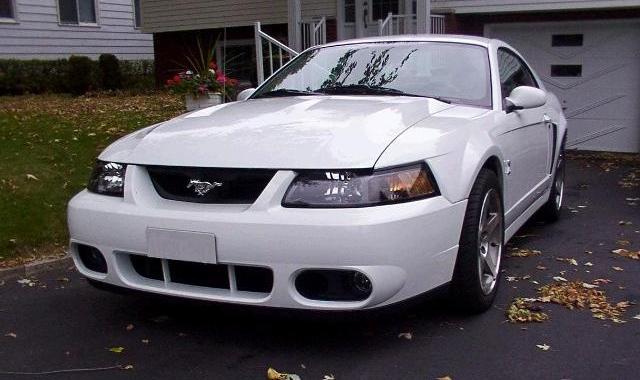
The author's 2003 SVT Cobra Coupe
While the 2003-2004 Cobra was special in its own right, SVT decided that a special edition Cobra should be made available for each year with a distinct style all their own.
2003 SVT Cobra 10th Anniversary Edition
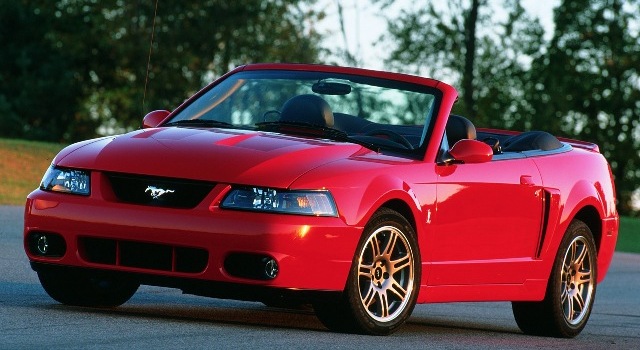
2003 SVT Cobra 10th Anniversary Convertible
For ten years SVT had been engineering and marketing some of the best vehicles to ever be sold by the Ford Motor Company. SVT decided to celebrate with a special edition of its spectacular 2003 Cobra. Available in either coupe or convertible, the 10th Anniversary Package consisted of unique dark argent painted split seven spoke anniversary wheels in front of red powder coated calipers. At the rear was a subtle 10th Anniversary SVT badge on the decklid.
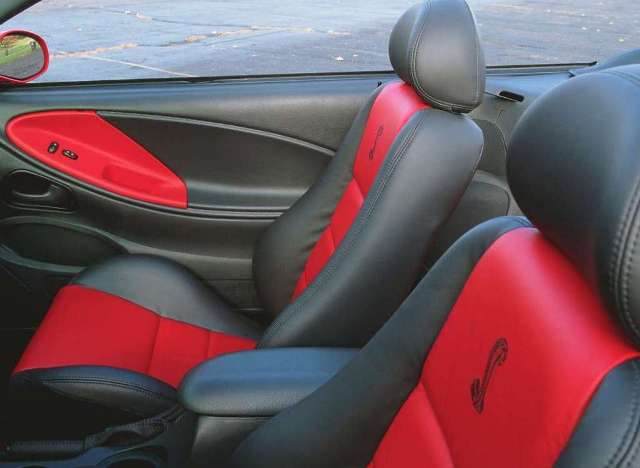
2003 SVT Cobra 10th Anniversary Convertible interior
Inside the changes were less subtle. The suede seat inserts were replaced with red leather, front and rear. Red trim inserts also adorned both door panels as well. The standard Cobra steering wheel was replaced with a new unit that featured palm grips and carbon fiber look leather trim. The carbon fiber look also continued onto the shift and hand brake knob along with shift lever and hand brake boots as well. Topping it all off was a set of floor mats with 10th anniversary emblems fastened to them. These changes made the interior of the 10th Anniversary Edition Cobra one of the most vibrant ever offered in a Cobra.
Production of the 10th Anniversary Cobra was limited to a total of 2,003 vehicles produced, split between 1,003 coupes and 1,000 convertibles. Only three colours were made available; Ebony Black, Torch Red and Silver Metallic.
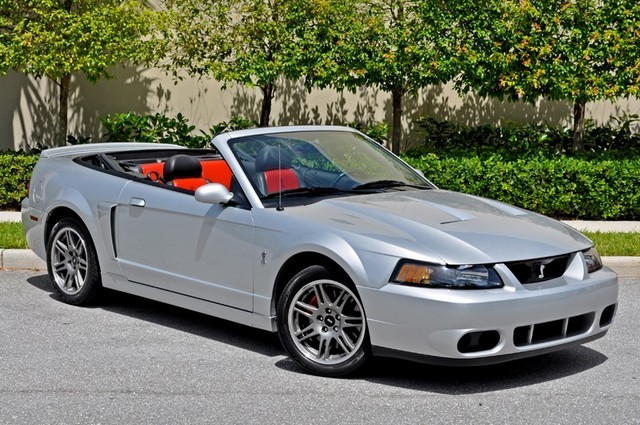
2003 SVT Cobra 10th Anniversary Convertible
While the 10th Anniversary Cobra didn’t perform any better than the “standard” Cobra it certainly looked distinctive, especially with its eye popping interior! However if you want the ultimate attention grabbing Cobra you better find yourself a 2004 Mystichrome Cobra, with it colour shifting paint you are guaranteed to draw a crowd wherever you go.
2004 SVT Mystichrome Cobra
There is no argument that the 2004 Cobra is a terrific looking car that gathers the attention of onlookers where ever it goes, but for those who wanted even more flash and attention SVT offered the limited edition Mystichrome Appearance Package. The Mystichrome Cobra is a feast for the eyes with its colour shifting paint that was simply stunning. However this wasn’t the first time SVT offered a Cobra with this type of paint. In 1996 the Mystic Cobra pioneered the use of colour shifting paint on a production car however the 2004 Mystichrome takes the technology a step further with expanded hues.
The original formula used on the 1996 Mystic Cobra changed colours from black to purple to root-beer brown as light and viewing angles changed. For the 2004 Mystichrome Cobra the shifting hues expanded and now changed from topaz green to cobalt blue to royal purple and finally to onyx black. This shift in colour is made possible by the use of ChromaFlair light interference pigments, produced by Flex Products Inc. When the ChromaFlair pigments are mixed with paint the tiny particles of pigment act like a tiny prism causing light to reflect and then split. As white light is reflected off of the paint and view angle changes, so does the visible colour.
To create Mystichrome DuPont chemists started with Green/Purple ChromaFlair pigments as a base. These pigments shift from bright green to a range of blues and then to purple. This formula was then blended with traditional black and green pigments and aluminum flakes were added to give the paint a metallic sparkle. The results were spectacular; the paint had deep, rich, vibrant colours with a very bright metallic sparkle. When Alan Eggly, Ford’s colour and trim director for North America first laid his eyes on the new colour he was instantly reminded of chromed exhaust headers blued by intense heat and instantly named the colour “Mystichrome”.
When painted with the Mystichrome finish the Cobra transforms from a beautiful performance car with restrained aggression to an absolute show stopper. The bright iridescent paint enhances the Cobra’s sinister looks and the shifting colours draws passers by in for a closer look. To further enhance the appearance a set of the optional chrome wheels were standard equipment. If there was ever a vehicle that suited a set of chrome wheels the Mystichrome Cobra would be it.
Inside the Mystichrome theme continued with colour shifting leather trim on the front and rear seat inserts and sections of the steering wheel. Since the ChromaFlair pigments could be mixed in water it was theoretically possible to use this technology to dye leather. As fate would have it one of Ford’s suppliers, Garden State Tanning, had been experimenting with ChromaFlair pigments and developed a process to colour leather with them. By replacing traditional leather pigments with ChromaFlair Garden State Tanning was able create a colour shifting leather.
To replicate the Mystichrome effect on the interior the leather hides were first tanned with black dye. Then the same ChromaFlair pigments that were used in the exterior paint was blended with leather-softening oils and then applied to the surface. To seal in the colour a clear protective coating was applied. The results are remarkable with the Mystichrome treated leather surfaces accurately mimicking the colour shift of the exterior paint. Because the tanning process is essentially still the same the grain and feel of the Mystichrome leather is identical to the leather used throughout other areas of the vehicle. The Mystichrome Cobra represented the first use of colour-shifting leather on vehicle produced by an auto manufacturer.
Many people mistake the Mystichrome Cobra as a custom painted Mustang and are shocked to find out that the car was in fact produced with the colour from the factory, an honest and easy mistake to make since the colour is so spectacular. In all a total of 1,010 Mystichrome Cobras were built, of those 515 were coupes and 495 were convertibles.
End of an icon
The 2004 model year marked many significant endings and one big milestone for the Mustang and the SVT Cobra.
It was the last year of the Terminator Cobra.
It was the last year the Mustang was produced at the legendary Dearborn assembly plant.
It was the last year of the New Edge styled Mustang.
It was the last year of the SN95 Mustang.
It was the last year of a Fox-platform based Mustang.
It was the 40th Anniversary of the Mustang.
And so all good things must come to an end and 2004 was the end of a significant era in Mustang’s history dating all the way back to 1979. While the Fox platform had long since past its best before date, it is remarkable that the engineers were able to keep the Fox-based Mustang modern and relevant enough to sell year after year over its 25 year run and the Terminator Cobra was a great example of how far a platform can be developed before its put to pasture. It is hard to believe that the 1979 Cobra and 2004 Cobra are both basically the same car under the skin, the styling and performance are worlds apart. Yet theoretically the components from the 2004 Cobra, with some minor modification, will bolt up to the car from 1979. The 2003-2004 Cobra was a triumphant ending to a car that millions drove and loved and more importantly keep the Mustang dream alive!
Now for the first time in 25 years a truly all new Mustang was waiting in the wings and Ford was promising something spectacular!
Click here to continue reading on the next page about the 2005-2009 Ford Mustang...
Most Popular Articles

Japanese Nostalgic Vehicles: The next trend in classic cars
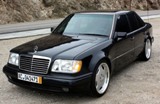
Five Sports Sedan's I'd Love to Own
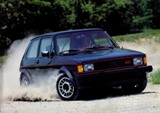
Hot Hatchbacks From the 1980's

Volvo 200 Series: An Unappriciated Classic

Triumph TR-6: Music to Anyone's Ears
Fifty Years of Mustang
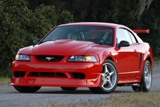
1999-2001 Ford Mustang SVT Cobra
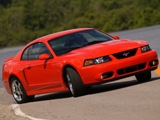
2003-2004 Ford Mustang SVT Cobra
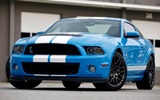
2010-2014 Ford Mustang Shelby GT500
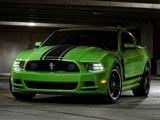
2012-2013 Ford Mustang Boss 302
Driven

Volvo 200 Series: An Unappriciated Classic

Triumph TR-6: Music to Anyone's Ears
1993 Nissan Skyline GT-s and GT-R Coupe

